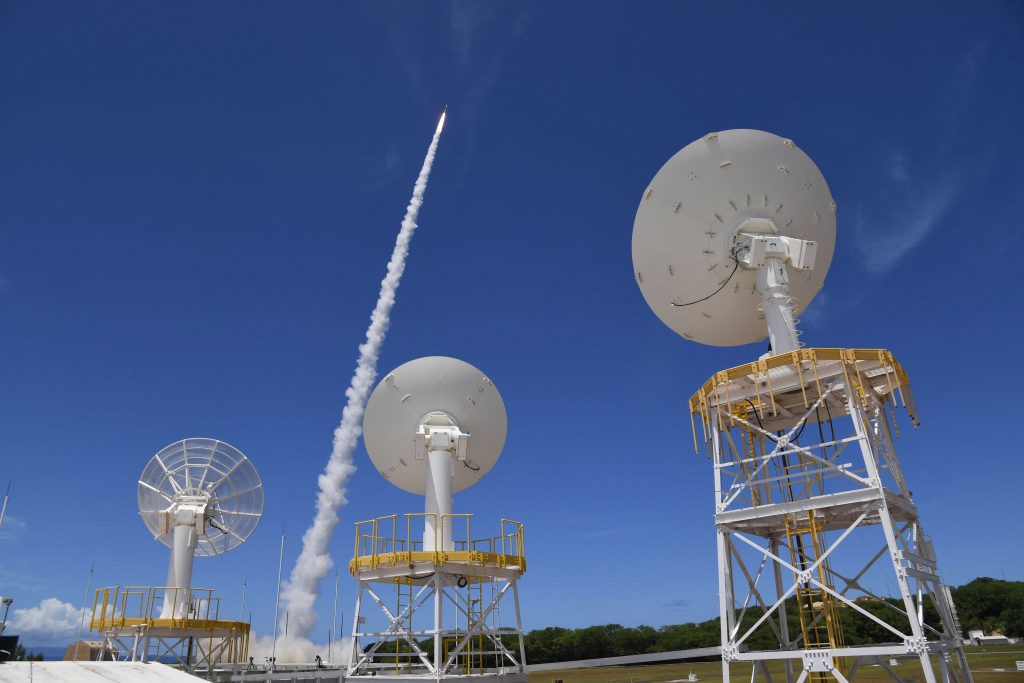Record flight supports missile defense research

The largest missile ever to launch from Sandia’s Kauai Test Facility in Hawaii has shown the storied test range is still growing to meet the testing needs of advanced weapons systems.
Sandia used the four years leading up to the launch to ensure the test facility could safely accommodate the new vehicle.
“Sandia’s flight safety analysis takes into account hundreds of failure modes and real-time wind profiles to ensure risks are within acceptable safety limits for personnel and assets,” said Steve Lautenschleger, the now-retired manager for the mission.
The missile sailed over the Pacific Ocean on May 29 as a medium-range ballistic missile-like target for Flight Test Aegis Weapon System 31 Event 1, a test coordinated by the Missile Defense Agency and the U.S. Navy. It stood 60 feet tall with a 6-foot base diameter.
Johnathon Huff, Sandia’s acting associate labs director over National Security Programs said, “The launch of the largest guided rocket ever flown from the Kauai test facility represents a great achievement for a nationwide team during challenging operational conditions. The team showed excellent focus on the mission in the face of extended assignments. I am honored to be part of a team at Sandia that meets the challenge of executing new, technically challenging capabilities.”
Sandia operates the Kauai Test Facility, located on the U.S. Navy Pacific Missile Range Facility, the world’s largest test range, for the DOE. Operational since 1961, the facility has supported more than 465 launches, including research and development, operational training and test and evaluation.
Launch team adapts to oversize vehicle
This latest, record-setting shot was so large that the missile service tower had to be physically modified. New floors were adapted to the larger missile diameter, and a new, 10-foot-tall launch stool was built for the launch. The tower gives workers access to the missile while it is sitting on the launch pad.
The modifications to the tower give Sandia flexibility to accommodate vehicles of different sizes for future launches. Several launches of a similar size to the one in May are now in planning stages.
As a test range service provider, Sandia provides assembly facilities for customer-provided flight vehicles, runs pre-flight diagnostics and ground testing, conducts launch operations, and collects and delivers data for various government agencies and partners.
Specialists normally rotate in from New Mexico to run these tests or manage progress on-site. But to minimize the spread of coronavirus, many of the team members consolidated travel and quarantined for 10 days after arriving in Hawaii. As a result, work trips typically measured in days or weeks in some cases stretched on for months.
“It’s difficult for personnel to field a mission at a remote site for that long. People on our team have families and other responsibilities back home. It takes an incredibly dedicated staff to execute this type of flight test.” Steve said.